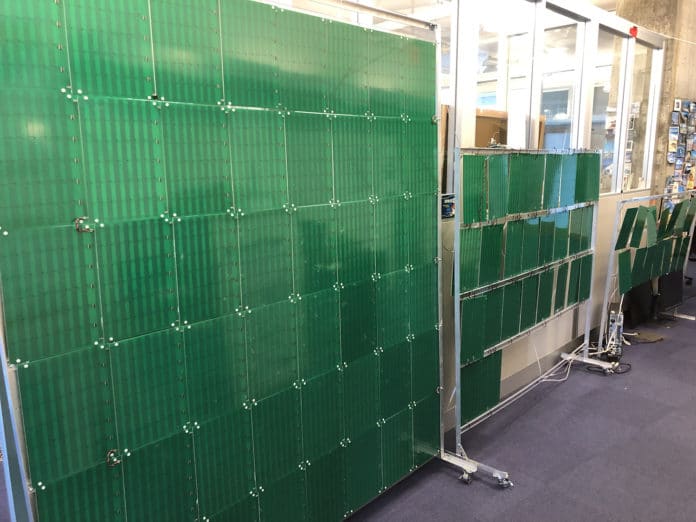Modern devices, with their miniature dimensions, leave very little space for placing antennas, complicating the task of providing a good signal. Due to the limited space for these applications, such as mobile phones, the Internet of Things, wireless sensor networks, wearable devices, and implantable biomedical systems, designing a multiband antenna with satisfactory performance is a challenging task.
Scientists at MIT‘s Computer Science and Artificial Intelligence Laboratory (CSAIL) tried to solve this problem. They have developed a “smart surface” called RFocus, which amplifies the Wi-Fi signal by almost ten times. The prototype of this RFocus includes a two-dimensional surface with a rectangular array of simple elements (antennas), each of which functions as an RF switch.
It consists of around 3,000 miniature antennas – each either lets the signal through or reflects it – that can be mounted on a wall or a regular board. According to the developers, in combination with special software, the solution provides maximum signal reception with a novel optimization algorithm that uses signal strength measurements from the receiver.
This turns out to be a cheap and easy way to amplify a Wi-Fi or 5G signal. In the first test, the “smart surface” was able to improve the median signal strength by 10.5 times and the median channel capacity by 2.1 times, writes the study authors Venkat Arun and Hari Balakrishnan.
Potentially, such an RFocus surface can be installed in the form of an inexpensive thin wallpaper, requiring no wiring. In addition, compared to “conventional” systems, the solution consumes less energy, since it does not require additional amplifiers that consume a lot of charges.
Such a solution can be especially useful for Internet of Things devices with too small sizes. However, the development stage is still far from the commercial stage.
Journal Reference
- Venkat Arun, Hari Balakrishnan, RFocus: Practical Beamforming for Small Devices. arXiv 2019 arXiv:1905.05130 [cs.NI]
